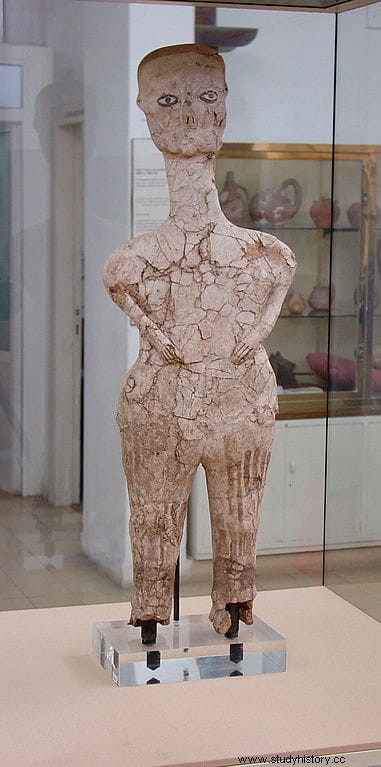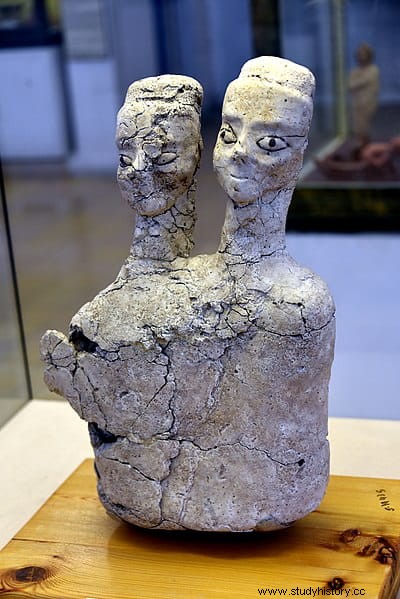During the construction in 1974 of the current highway that connects the cities of Amman and Zarqa in Jordan, the remains of a large Neolithic settlement of about 10,000 years old were found in which hunter-gatherers coexisted with an incipient agriculture.
The site, located on the outskirts of Amman, between the Tariq and Basman neighborhoods, was excavated in 1982 when it had already been damaged by the construction of the road and the urban expansion that followed.
The excavations, which lasted until the 1990s, brought to light important discoveries, among which several wells or pits that contained a series of anthropomorphic plaster statues stand out.

Two groups met a few years apart. These statues are considered among the oldest known large statues today, collectively referred to as Ain Ghazal statues .
These are 15 busts and 15 statues (plus 2 heads) that were found buried in two different graves (separated by 200 years in their creation) and next to buildings that may have had ritual functions during the Preceramic Neolithic. All the statues date to approximately between 7200 and 6500 BC. and its purpose is unknown.
They are modeled in white plaster with an inner core that was made from bundles of reeds and reeds (from the Zarqa River bank) tied together with ropes. The heads, torsos, and legs were created separately, then assembled and covered in plaster. The inner cane decomposed over the millennia, leaving the interior of the hollow plaster.

The eyes, wide open, were made from shells. A black bituminous material was used to create the pupils of the iris, and the same material pressed into the grooves surrounding the eyeballs, where the effect is enhanced by the addition of an unusual green mineral pigment, dioptase.
They represent men, women and children, although sexual characteristics are not highlighted in them. Three of the busts have two heads, and the only parts modeled in detail are the faces. Many of the statues are decorated with paint to indicate hair, clothing, and also to highlight facial features. The heads were covered with a kind of wig.

They are not life-size statues but relatively large. The largest reach a meter in height, and on the other hand they are disproportionately flat, with a thickness of about 10 centimeters. They were designed to stand upright and be viewed only from the front. However, their exposure in such a way would have caused them to rapidly degrade. The fact that they were found in good condition indicates that they may have been intentionally made for burial.
There are some differences between the statues found in both graves. Those of the first are more naturalistic, they are represented with arms and the body is curvilinear and with more varied postures than those of the second. The use of paint is also more frequent on the statues from the first pit, while those from the second pit are larger, more angular, and have no arms. Finally, the face is more standard in the statues of the second pit, while the figures in the first pit possibly represent individuals.

The two-headed busts appeared exclusively in the second pit and, according to Steven Mithen, could represent the god Marduk, who had two heads according to Babylonian literature.
After its discovery, the group of statues found in the first place was sent to the Royal Archaeological Institute of Great Britain, and the second to the Smithsonian Institution in New York for restoration. Once the works were finished, they were returned to the Jordan Museum in Amman, whose collection they form part of today, although some are on loan to other museums around the world, such as the Louvre or the British Museum.
In addition to these statues, other anthropomorphic and animal statues also appeared at the same site, but made of clay. The total number of recovered statues amounts to 195, 155 of them being domestic animals.
